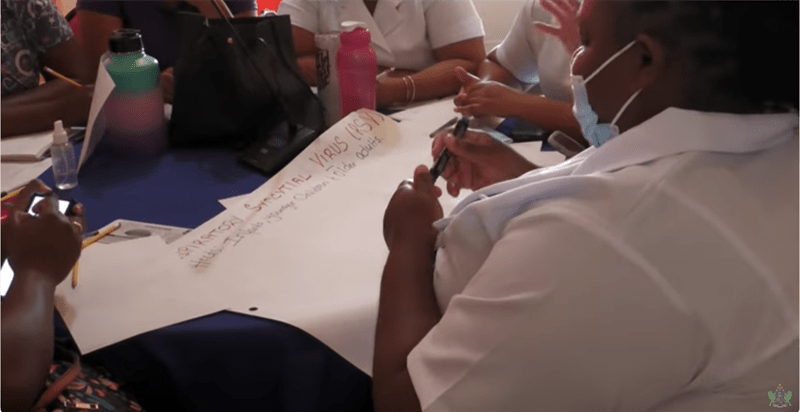14th February 2024
Communicable Diseases and Syndromic Surveillance Training
By Sant Justin, Ministry of Health


Healthcare professionals attended a two-day training workshop hosted by the Ministry of Health, Wellness and Elderly Affairs and CARPHA, which focused on improving the island’s Health Surveillance System.
Data collected through syndromic surveillance provides a continuous stream of information that offers real-time insights into the health of a population, allowing health authorities to promptly detect and respond to outbreaks and new and emerging health threats.
On January 29, the Ministry of Health, Wellness and Elderly Affairs begun training sessions on Communicable Diseases and Syndromic Surveillance. The session was invigilated by CARPHA’s Technical Officer for Infectious Disease, Dr. Maurice Frank, and covered many areas including the delivery of key messages to the public.
“We need to consider how are we reaching the population, and what is the target population. Sometimes we put out a message and whoever receives the message receives it. But we need to ask whether those people are health literate because they may not necessarily understand the terms and scientific jargon that we’re putting out there,” he said.
The sessions were interactive and required the participants to create their own surveillance system.
Dr. Frank touched on a number of thought-provoking aspects relating to national surveillance methods.
He said: “We are living in a globalized world. Whether we pay attention to it or not it is so easy for a disease to cross borders. We need to consider what the role of port health is and the methods of isolation at the ports. We need to consider the health security aspect. What is the picture of Saint Lucia’s health security system, who is needed for an outbreak response and who is needed for surveillance.”
From 2014, Saint Lucia has had an established syndromic surveillance system set up at 36 reporting sites throughout the island. This allowed for the detection of the Zika outbreak in 2016, and any changes in disease patterns which may appear throughout the year.
While the COVID-19 pandemic allowed for increased capacity, it also highlighted the need for continuous training and retraining of health care personnel so as to improve the country’s preparedness to respond to new and emerging diseases.

TO RECEIVE NEWS NOTIFICATIONS VIA WHATS APP PLEASE SAVE OUR NUMBER AND SEND US A MESSAGE AT 7584896261 AND WE WILL ADD YOU TO OUR LIST







